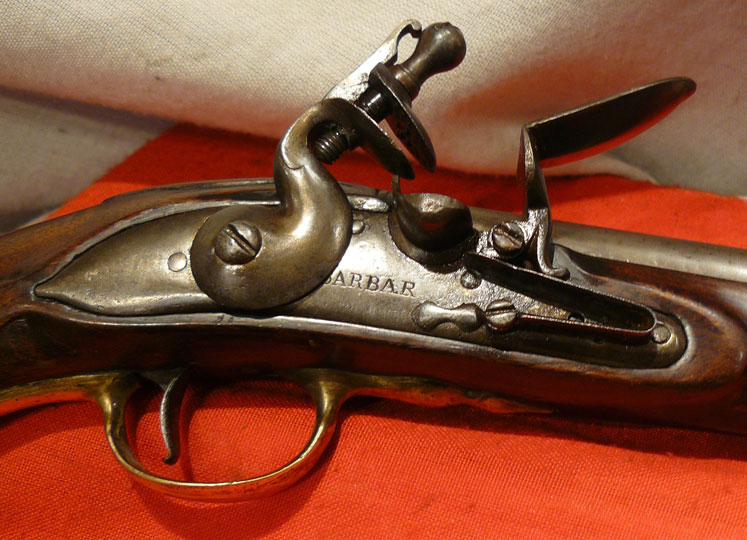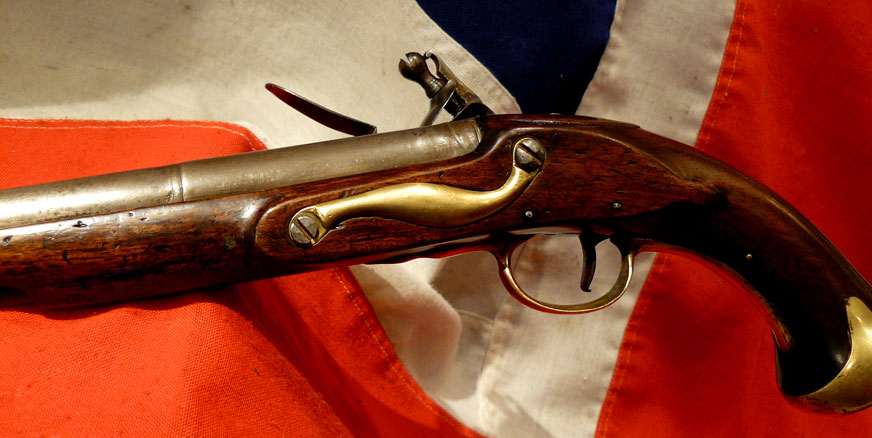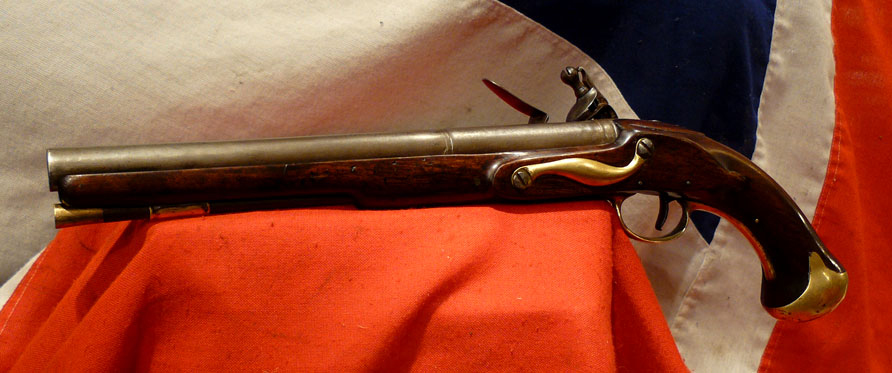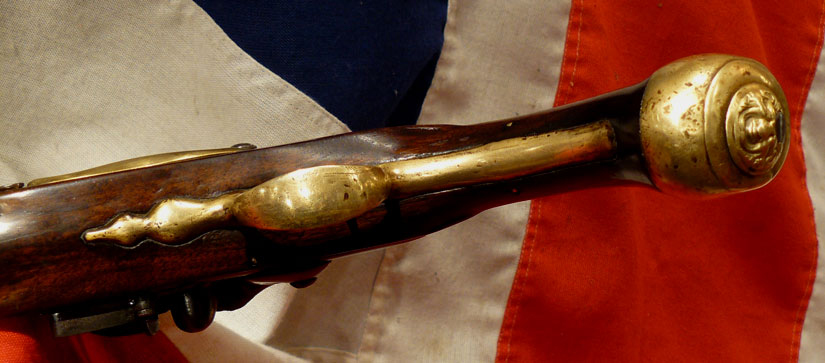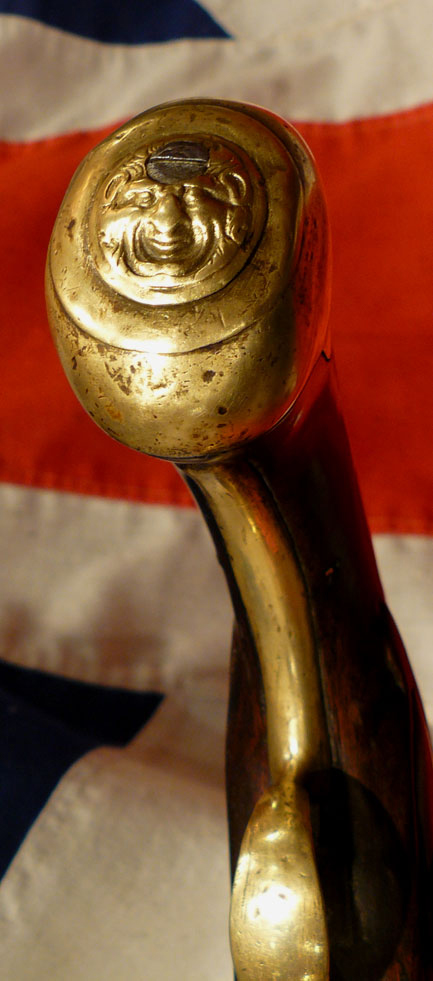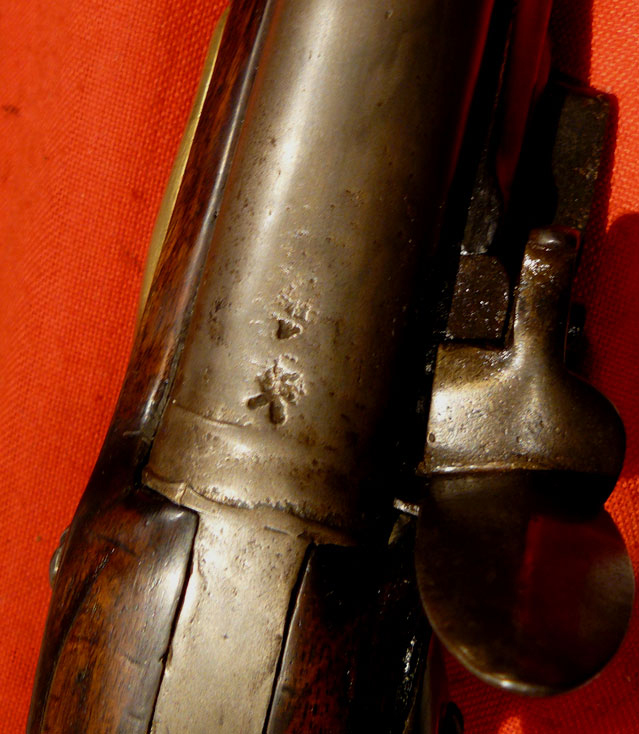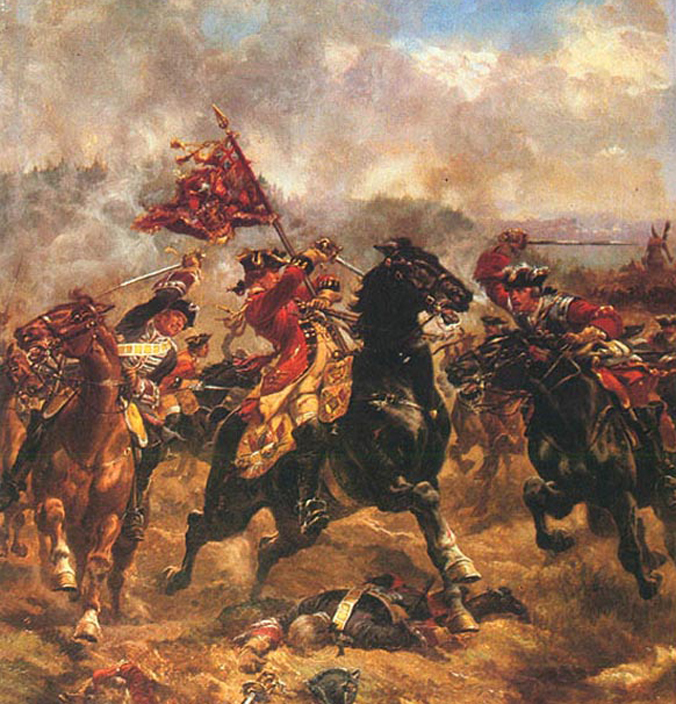Beautiful ‘Queen Anne’, London, Dragoon Officer's Long Barrel Horse Pistol, Lock Named James Barber A Most Beautiful Example.
12 inch Barrel, bearing early barrel proof stampings of A.R., the crossed sceptre gunsmith proof markings of Queen Anne, 1702-1714, stamped in the early period position, at the top of the breech of the barrel. Later on, and henceforth, proof marks were stamped on the left hand side of the breech. The pistols military furniture is all brass, with a typical officer's type short eared style skull crusher butt cap terminating with a grotesque mask the early type, from the time of King William IIIrd, before the long spurred style became fashionable in the 1740's. The lock is the early banana form, typical of the earliest 18th century long pistols, with a the good and clear name of Mr. Barbar inscribed. It has a good and responsive action. The stock is fine walnut. It has a single ramrod pipe, also typical of the early Queen Anne style. This would not be a trooper's pistol, but a officer's private purchase example, from one of the great makers and suppliers to the dragoon regiments and officers of his day, during the time of King George IInd. This pistol would have seen service during the War known as King George's War of 1744-48, in America, and the 7 Years War, principally against the French but involving the whole of Europe, and once again, also fought in America. Recognized experts like the late Keith Neal, D.H.L Back and Norman Dixon consider James Barbar to be the best gun maker of his day. Dixon states, "Almost without exception, unrestored and original antique firearms made by James Barbar of London are of the highest quality". In Windsor Castle there are a superb pair of pistols by James Barbar and a Queen Anne Barbar pistol also appeared in the Clay P. Bedford exhibition at the Metropolitan Museum of Art. Barbar supplied complete dragoon pistols for Churchill's Dragoons in 1745, also guns for the Duke of Cumberland's Dragoons during 1746 to 48, and all of the carbines for Lord Loudoun's regiment of light infantry in 1745.
James was apprenticed to his father Louis Barbar in October of 1714. Louis Barbar was a well known gun maker who had immigrated to England from France in 1688. He was among many Huguenots (French Protestants) who sought refuge in England after the revocation of the Edict of Nantes by Louis XIV in 1685. Louis was appointed Gentleman Armourer to King George I in 1717, and to George II in 1727. He died in 1741 .
James Barbar completed his apprenticeship in 1722 and was admitted as a freeman to the Company of Gunmakers. By 1726 James had established a successful shop on Portugal Street in Piccadilly. After his father's death in 1741, James succeeded him as Gentleman Armourer to George II, and furbisher at Hampton Court. He was elected Master of the Gunmakers` Company in 1742. James Barbar died in 1773.
The book "Great British Gunmakers 1740-1790" contains a detailed chapter on James Barbar and many fine photographs of his weapons. This lovely pistol is 19 inches long overall. It has had some past overall service restoration within the past 100 years. The mainspring, stock were replaced, as was the ramrod. But, it is often the case as this pistol may likely have seen somewhat rigorous combat service during its working life for upwards of 80 years. It is a beautiful looking pistol, and a fine looking example of the early British military pattern gunsmiths. As with all our antique guns no license is required as they are all unrestricted antique collectables
Code: 21363
5850.00 GBP



